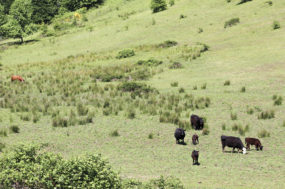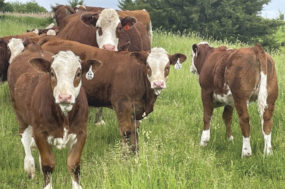A plethora of both informational literature and seminar-style workshops have emerged in recent years on the topic of technological advances as they relate to a reduction in workforce.
As a veterinarian, I have written and currently speak on the need to use new technologies to improve the health of cattle. Technology is good … right? It provides for ease in data analysis and compilation without even picking up a pencil.
It helps navigate our car to a new rural client without unfolding a map. It means that we are now only administering one vaccination shot instead of three or more. The list goes on and on.
Some grumble about the changes and costs involved, but as they are accepted, most people end up adopting and embracing them.
Of course, since our subjects – cattle – can’t communicate their needs to us, we can only theorize about what they feel is in their best interest and how they benefit from less disease or gentler handling.
Now, I may have some traits that resemble the animals in my care – stubbornness, enjoying the fellow herd, eating – yet I am but a human and can only theorize about what is better for a cow.
But because I am human, I can give some real-life examples about the benefits technology has given me.
Cattle-working facilities, namely squeeze chutes, have come a long way. I think we are all better off with the advent of hydraulic chutes that have eased our workload and put less stress on the cattle in our care. Do we want to go back to the days when it takes more people to work cattle and not as safely?
Many years ago, before applying to vet school, I understood that it was difficult to gain acceptance into a program – something that still holds true today.
Admittance requires excellent grades and a commitment to study hard and endure the extra years of schooling required. Did I attend vet school to learn a skill or learn to think?
Am I to sell my skills or my knowledge? Not easy questions, but we are being challenged to confront these matters as new technology conflicts with what we have always done.
Pregnancy diagnosis has been a mainstay for our profession, and until recently, there have been few options outside of the traditional manual detection methods. New diagnostics technology threatens to limit the number of palpations cattle veterinarians do annually.
Obviously, that has an effect on revenue. But what effect does it have on the health and quality of life of the veterinarian, putting the value of the cattle aside?
How many of you know a practicing vet that has been “arming” cows for a while? Have they had issues with injuries of the hand, elbow and shoulder? Most have, because of the challenging ergonomics of the actual palpation procedure.
If done correctly, many of the negatives can be avoided. The problem is that as farms get larger and more animals are required to be checked, rest for the palpator is not an option, as they are usually being paid hourly.
Are we crazy that we want to keep doing the manual checking even when it limits our practice career?
We do it because it gets us on the farm. Once we are on the farm, we can educate (“at the back end of the cow”), look at other animals and develop the relationship that allows us to script medications. Without physically palpating, will cattle owners still pay us to offer medical and management advice for their cattle?
In my travels, I meet many operations that want a veterinarian that will consult them on best practices and preventative care.
Not being a general practitioner, I can only say that the industry is changing, and options are being made available that will either make the practice of veterinary medicine stronger or help it grow obsolete. The onus is on our profession to demonstrate that we can bring value to producers.
Maybe it’s time we had classes focused on sales and marketing our services in vet school. The old adage of “hang your shingle and let them come to us” may not be sufficient to sustain business in the face of new technology.
The new technology may also lead to a more fulfilling career with less surgery and pain associated with having to palpate all animals to make a living. ![]()








